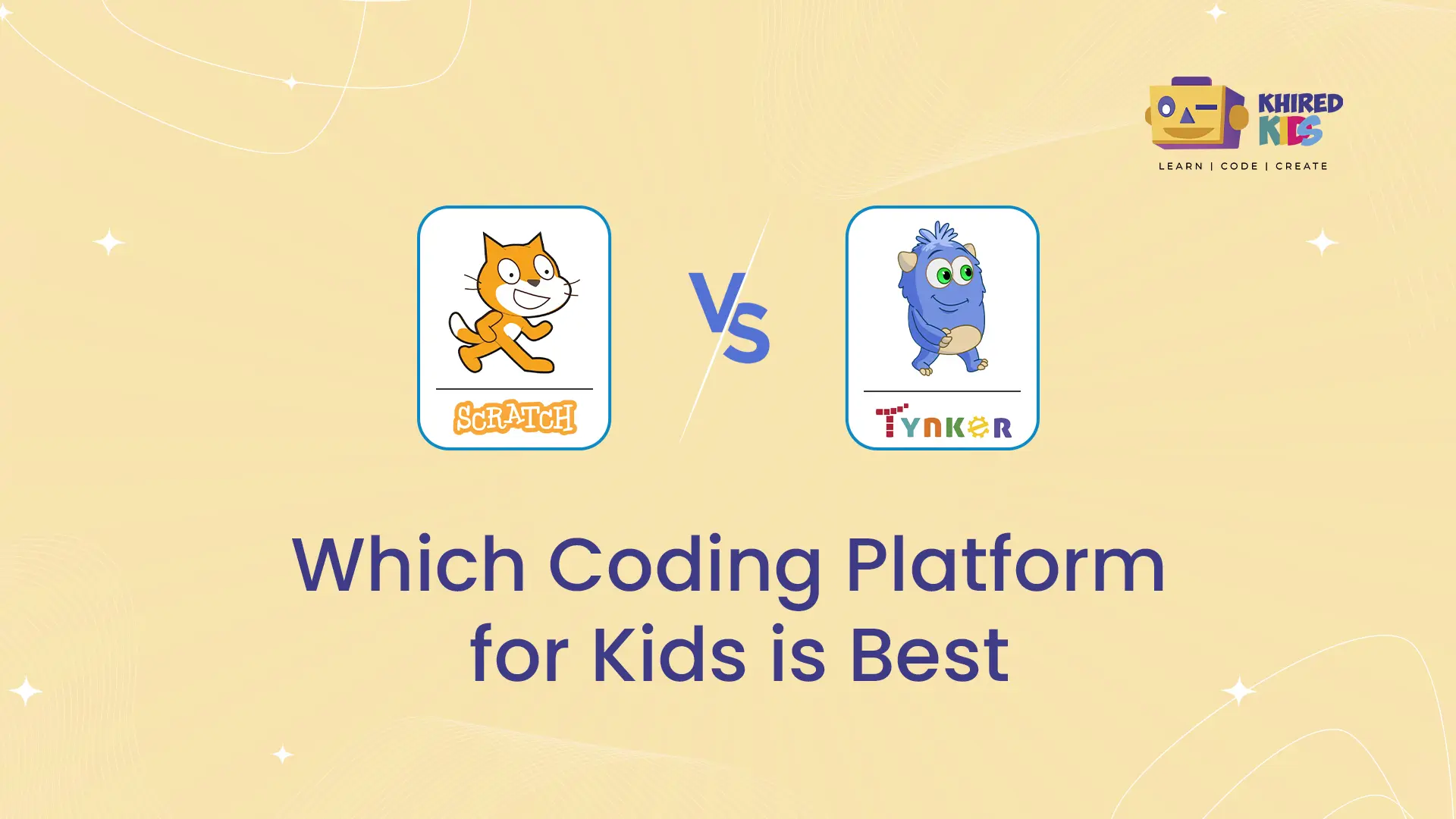Educating your kids in the most useful and highly demand skills is every parent’s priority. As coding is becoming an important skill, parents are doing their research on it. There are various platforms available online and offline to teach coding to children. But it can be challenging for parents to find the best option.
Now, everyone is aware of how coding can impact their kids’ lives. They are aware about coding but didn’t know how to take the first step for this. Two of the most popular coding platforms for kids are Scratch and Tynker. Both platforms have their unique features and benefits.
In this blog, you will explore the comparison between Scratch and Tynker. Moreover, we will help you to decide which platforms might be the good option for your child. Let’s get started!
Overview of the Scratch
What is Scratch?
Scratch is a simple visual programming language, developed by MIT Labs primarily for beginners. A Visual programming language allows users to create their imagination through visuals and symbols rather than text. It is designed to make programming accessible and enjoyable for kids.
Why Would You Consider Scratch?
- User-Friendly Interface: Scratch provide several benefits such as it has a simple interface as it is based on a visual programming language. Kids can easily learn and use this.
- Creative Freedom: It allows kids to create interactive stories, games, and animations.
- Community Support: Scratch gives access to kids to showcase their projects and ideas and receive feedback from online communities.
Overview of the Tynker
What is Tynker?
Kids aged 5 to 18 can use the coding platform Tynker. With engaging projects and activities, it offers a wide range of entertaining and engaging courses that assist children in learning to code.
Why Would You Consider Tynker?
- Structured Learning: In comparison to Scratch, Tynker provides a more structured education.
- Different engaging Activities: It offers a wide range of activities such as interactive classes, coding challenges, and game-based learning. These activities help kids get engaged and learn coding in a fun way.
- Real-World Coding Languages: Tynker gives opportunity to kids learn code by using real-world languages such as Python and JavaScript. It also teaches kids block-based programming.
What is the Difference Between Scratch and Tynker?
1. Ease to Use
| Scratch | Tynker |
| Scratch uses a drag-and-drop interface instead of typing lines of code. Its features such as Jargon and different types of blogs make scratch easy to use. Scratch is designed simply so that children can learn through exploring, experimenting, and playing. | Tynker starts with a block-based interface for younger kids, making coding easy and visual. As they advance, they can switch to text-based coding, which helps them smoothly move from visual to written code. |
2. Curriculum and Learning Path
| Scratch | Tynker |
| There is no set curriculum for Scratch. Children are urged to explore and pick up knowledge at their own pace. For creative minds that learn best via experimenting and inquiry, an open-ended method may be helpful. | With its graduated levels and thorough lesson plans, Tynker provides a more organized learning experience. Kids who are interested in a more structured learning setting may benefit from this. |
3. Games and Creative Projects
| Scratch | Tynker |
| By enabling kids to create a variety of projects from simple animations to complex games, scratch builds kids’ creativity. The platform provides various tools and resources to help children bring their ideas to life. | Tynker focuses more on game development than other creative projects, yet it still offers a wide range of options. Kids can program robots and drones with Tynker, and they can even make more complex games. |
4. Cost and Accessibility
| Scratch | Tynker |
| The fact that Scratch is totally free is one of its greatest benefits. This makes it accessible to everyone, irrespective of their financial circumstances. All you need is a computer that can connect to the internet. | Tynker offers several different subscription plans. Numerous activities are offered without charge. However, access to the whole curriculum and advanced features requires a premium subscription. Budget-conscious families might wish to consider this. |
5. Compatibility with Educational Standards
| Scratch | Tynker |
| Scratch is a popular educational program that is the best choice for learning code and programming. It’s a great resource for teaching children how to code. | Tynker aligns with various educational standards. It also offers specific courses designed to meet these standards. This makes it a great choice for schools and educators. |
Pros and Cons
Scratch
| Pros | Cons |
|
|
|
|
|
Tynker
| Pros | Cons |
|
|
|
|
|
Which Option Is Ideal for Your Child?
Your child’s learning style and interests are the only factors to consider while deciding between Tynker and Scratch.
| Choose Scratch if | Choose Tynker if |
|
|
|
|
|
|
Final Words
Scratch and Tynker are both excellent platforms for teaching kids to code. They each offer unique features that provide different learning preferences and goals. By understanding your child’s needs and interests, you can choose the platform that will best support their coding journey.
Moreover, if you want to know coding concepts, its benefits, and where to start you can explore the Khired Kids website. Their blogs offer a variety of information and help parents to make valuable decisions for their kids.
This blog helps you to differentiate between Scratch and Tynker. It also enables you to choose the perfect coding platform for your child based on their interests. We wish you the best of luck!


0 Comments